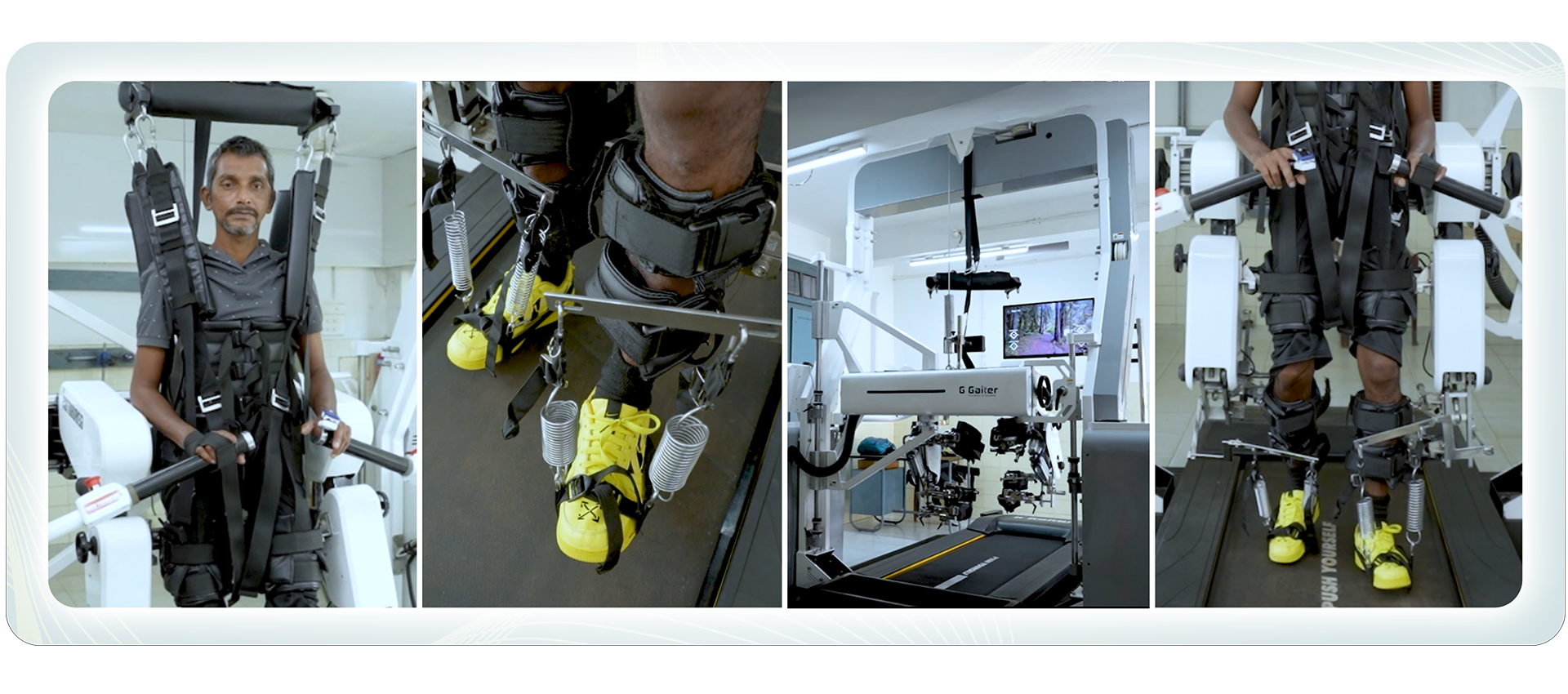October 29, World Stroke Day, is a reminder of the importance of early treatment, structured rehabilitation, and continued support in helping individuals rebuild their lives after a stroke.
Conditions such as stroke or spinal cord injury can completely change the course of a person’s life. For many, the primary goal during rehabilitation is simple, to walk again.
At the Department of Physical Medicine and Rehabilitation in General Hospital Thiruvananthapuram, that goal is becoming a reality for more patients. The hospital has introduced robotic assisted gait training using the G Gaiter, marking a new phase of rehabilitation within a government healthcare setting in Kerala.
Nizamudeen’s Story
Nizamudeen, 39, from Bheemapally, was at work when he suffered a stroke that left the left side of his body paralyzed. He was first treated at the General Hospital and later at the Medical College. Despite surgery and regular physiotherapy, his recovery remained limited.
“When we came to General Hospital, the doctor advised physiotherapy again,” recalls his wife, Shamsunnisa. “After ten days, we began to see small changes. Then they suggested robotic gait training.”

Visible Progress
Each session with the G Gaiter lasts about twenty minutes and continues for around twenty days. For Nizamudeen, progress became visible within weeks. “He was bedridden before,” says Shamsunnisa. “Now he walks on his own and manages his daily routine without help. People who saw him earlier are still surprised.”

Rehabilitation That Reaches Everyone
The robotic gait trainer has been running successfully for a year at the hospital, helping more individuals benefit from structured and consistent rehabilitation guided by clinical expertise and technology. On World Stroke Day, the team at General Hospital Thiruvananthapuram highlights how continuous rehabilitation supported by advanced systems can improve outcomes in Physical Medicine and Rehabilitation. Each step taken here tells a story of confidence regained and the growing strength of public healthcare in providing advanced rehabilitation for all.


.jpg)